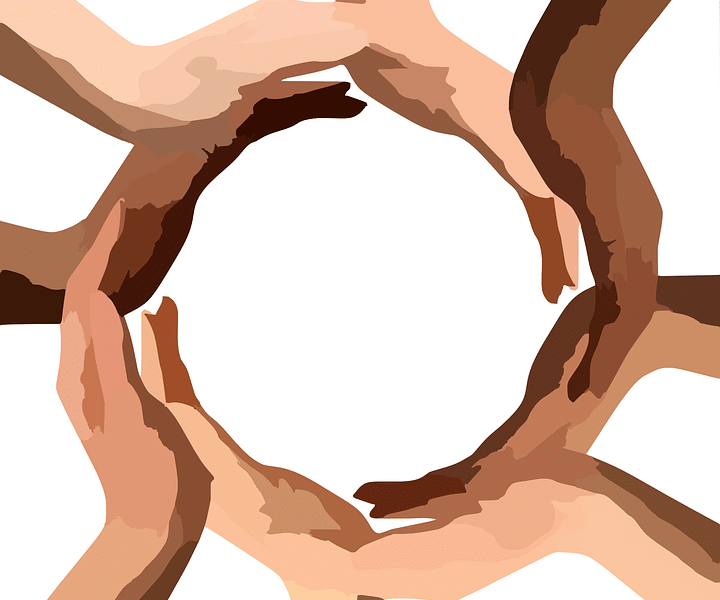
NEW YORK (WOMENSENEWS)–For the second time, the four teen-agers from the New York City area got to see their short films on the large screen. They got to hear the applause and see their names writ large as the credits rolled.
The occasion, hosted by Tanya Lewis Lee, author and wife of movie director Spike Lee, was part of a program called “Screening of Our Youth” that is designed to encourage thefilmmaking aspirationsof black female teens.
The young women submitted essays about the movies they yearned to make and were then selected by a panel of judges from African American Women in Cinema, which runs an annual film festival as well as bimonthly screenings. The program put cameras in the hands of the young women and shepherded them all the way through production.
“I wanted to produce a creative outlet for our young to express their talents through the art of film,” says Terra Renee, executive director and founder of the program, which is funded by the estate of the late African American actor Dorothy Dandridge, and Africana.com.
One of the young filmmakers is 14-year-old Tralynn Husbands. Her movie “Too Much” is loosely based on a true story about a teen named Jasmine, emotionally isolated from her family, who survives a gang rape with the help of her friend.
“I have many ideas,” said Husbands, currently working on her first feature screenplay and hoping that her film serves as a life lesson for its viewers. “I hope to do everything. I hope to let people know that young African American women can do everything; direct, star and write.”
Cautionary Tales
But if Husbands’ film is meant to serve as a life lesson for others, many black female filmmakers say their own struggles offer a cautionary tale to up-and-coming talents like her. If Husbands wants to make another movie, they say, her list of what African American women can do must be expanded. “Raising money” needs to be high up there.
This time, Husbands and the other young women had resources handed to them. But as Aishah Shahidah Simmons can tell you, that’s not how it really goes.
The Philadelphia resident decided in the fall of 1994 to make the documentary “NO!” about rape and sexual assault on middle-class black women. Ten years and $160,000 later–strung together by grants, cash, in-kind donations and income from her own occasional speaking engagements–Simmons is still looking for $50,000 to complete the film, which she hopes to screen next fall.
Simmons chalks up some of her funding problems to the controversial nature of her subject. “It’s definitely the subject they (funders) didn’t want to touch,” says Simmons. One cable executive, she says, told her, “Let’s face it, most people in Middle America don’t care about the rape of black women and girls.”
High Hurdles
While every aspiring filmmaker faces obstacles, Elizabeth Hadley, an academic who is working on book about blacks in film, television and video, says that in the case of black female filmmakers, the hurdles are particularly daunting.
“There are number of black women making films,” says Hadley, the chair of Women Studies at Hamilton College in Clinton, N.Y. “The problem is not black women making films but distribution, marketing and funding. The majority are finding money independently and working on shoestring budgets. It takes about $50 million to start a (Hollywood) movie, $30 million to market it . . . and these women don’t even get there.”
When resources are made available, Hadley says Hollywood steers them toward black men and then only one black man at a time. Major studios “can only have one of any black person at any time,” she says, adding that in the 1980s it was Spike Lee and in the 1990s it was John Singleton, director of “Boyz N the Hood.”
Yvonne Welbon, filmmaker, scholar and Chicago resident, agrees that Hollywood is more inclined to fund projects spearheaded by men.
“Women are 51 percent of the population,” says Welbon, “and less than 7 percent of the directors (in the Directors Guild of America). Black women often aren’t directing in Hollywood at all and yet the stats show that 5.6 percent of films are directed by African Americans. Those directors are all male and since about 6 percent of the population in this country is African American men, I’d say black men have arrived in Hollywood and women haven’t.”
Critics say that the male-funded movies reinforce a gangster-and-ghetto depiction of black Americans and that Singleton’s 1991 “Boyz N the Hood” ushered in a spate of copy-cat urban movies–“Juice” in 1992 and “Menace II Society” in 1993–bursting with gangs, drugs and gunfire.
Less Gratuitous Sex and Violence
More recently, however, critics say that a few movies have leavened the gun-and-drugs-crazed picture of black Americans. Two often-cited trailblazers are the 2000 “Love and Basketball,” written and directed by former college athlete Gina Prince-Bythewood and the 1997 “Eve’s Bayou” written and directed by the actor Kasi Lemmons. Both are notably light on gratuitous sex and violence and both are made my black women.
Hadley also points to the 1995 “Waiting to Exhale,” co-penned by Terry McMillan, who wrote the bestselling book on which the movie was based. In what critics call a refreshing departure from Hollywood’s struggling depictions of black women, the central character played by Angela Bassett is upper middle class. When her husband leaves her for his white secretary, she drowns her sorrows in champagne, not cheap wine.
“We get to see a woman who is broken (but who is) not counting pennies trying to figure out if she is going to pay her rent or feed her kids,” says Hadley. “If people say that’s not realistic, well neither is filmmaking. The subtext of such a view,” she adds, is that “our children” aren’t supposed to dream but are only supposed to aspire to what is around us. “That’s why ‘Boyz’ films get access,” she says, referring to the Singleton movie. “Because that’s how white people see us.”
“Black women have begun to come into their own in the last 10 years and have begun to tell stories,” says Bishetta Merritt, associate professor of radio, television and film at Howard University’s John H. Johnson School of Communications in Washington, D.C.
But the big story, she and others say, is what happens at the box office. And there the jury is still out. While “Eve’s Bayou” netted $10 million and “Love and Basketball” netted $12 million, “Waiting to Exhale” did far better, netting $51 million, ahead of the $50 million netted by “Boyz N the Hood.”
Carla Thompson is a freelance writer living in Brooklyn, N.Y. and author of the upcoming memoir, “Bearing Witness: Not So Crazy in Alabama.”
For more information:
African American Women in Cinema:
http://www.aawic.org/
Sisters in Cinema:
http://www.sistersincinema.com/

